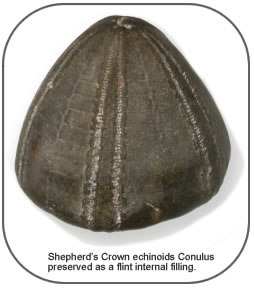It is very well known that the cross as a symbol and superstitious emblem goes back to very early pagan times, but it was not until the fourth century that it is thought that it was adopted as such in the Christian religion.
One theory is that it was adopted for its resemblance, on one hand to the initial Greek letter (X) of the name Christ, and on the other hand to the Roman instrument of crucifixion.
A form of ancient cross common in the Bronze Age, especially in Western Europe, was that which is contained within a circle-the so –called “ wheel-cross, “because it resembles a wheel with four spokes.
The circle is held to have represented the solar disc. This form of ornament or symbol survives to the present day in the so-called Iona crosses, and can be found in some of the haloes depicted in stained glass windows.
Man is a suspicious person, and sees symbols in everyday objects, such as hanging up a pair of stag’s anthers, why because he saw in them the crescent, the symbol of the moon god, and they would be expected to bring good luck. Horse-shoes being hung up, for the same reason.
The Shepherds Crown. A Cross!.
Some Cretaceous echinoids, notably Micraster, Echinocorys and Conulus, ha
 ve distinctive shapes, leading to the name Shepherd's crowns in English folklore. The five rays converging on the apex of the fossil resemble the ribs of a crown. According to Bassett (1982), shepherds may have come across these fossil echinoids, weathered out of the underlying chalk, while caring for their sheep on the downlands of southern England.
ve distinctive shapes, leading to the name Shepherd's crowns in English folklore. The five rays converging on the apex of the fossil resemble the ribs of a crown. According to Bassett (1982), shepherds may have come across these fossil echinoids, weathered out of the underlying chalk, while caring for their sheep on the downlands of southern England.The echinoid test, and/or the sediment infilling it, can be replaced by flint, making it more resistant than the surrounding soft chalk. This facilitates survival of the fossil once exhumed and increases its chances of being collected.
Why man has thought that by putting one of theses fossils on a windowsill will ward of evil sprits I do not know, but it is a superstition that has been going on for many years. Perhaps an explanation is that it has radiating marks on it , and could be interpreted as a sign of the Cross !.
A certain Mr. H. S Toms, a Sussex writer and researcher in the 1920s drew attention to these superstitious uses to which these fossils have been put over time, from the Bronze Age to the present day. They are supposed to protect buildings and persons from lightning and from the EVIL EYE!
They were and perhaps still are placed in dairies to make the milk good and clean, they have also been used as necklaces and amulets, being worn they will protect the person from evil and illness, and this is still the belief among many races today throughout the world.
The superstitions surrounding certain fossils seems to be that it is inspired by shape, and some having the markings of a cross on them, or that the markings can be interpreted as a cross shape imbedded on them.
All these superstitions were important to man over the ages, and suspect they are still to many to day, these things provide food for thought, and make us think that when today we make the sign of the cross, what does it really mean, is it a Pagan symbol!, then is not a lot of Christianity based on Paganism.
Refs: Prehistoric Sussex Cecil Curwen pub.1930.
Mr. H. S. Toms. Downland Post. Sept. 1926, pp. 264, 265.
Rodney Gunner. 2006.

1 comment:
Your are Excellent. And so is your site! Keep up the good work. Bookmarked.
»
Post a Comment